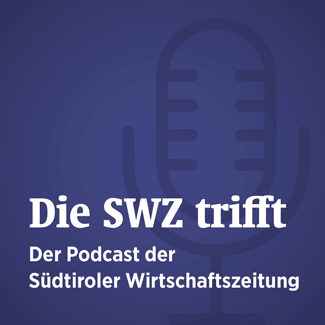Bozen – Nowadays being entrepreneurial is crucially important for family firms’ competitive advantage, growth, and survival, and plays an important role for their prosperity across generations. Through corporate entrepreneurship, firms can indeed innovate, set up new businesses, and transform themselves by actively exploiting the opportunities they identify. This is particularly relevant in South Tyrol, where family firms are at the core of its economy and society.
To succeed in corporate entrepreneurship, it is not only important to recognize valuable and viable opportunities, but also to take actions to effectively exploit them. This means deploying the actions, resources, and investments necessary to exploit opportunities that have previously been formed. Once a firm has for instance recognized the opportunity to develop a new product, it has then to decide whether to take action to exploit that opportunity – which often entails identifying resources and investments, and making decisions related to production, marketing, and sales – or not.
Unfortunately, corporate evidence reveals that family firms exploit fewer opportunities than their non-family counterparts. Family firms are indeed typically more risk adverse, conservative, reluctant to change, and preoccupied with preserving their wealth. Therefore, it is crucial to understand how these peculiar firms – that are dominant in South Tyrol and across Europe – can keep up with non-family firms in addressing the challenge of corporate entrepreneurship.
Family firms adopt different organizational configurations for their TMT compared to non-family firms
A possible solution to unlock the entrepreneurial potential of a family business is to leverage on organizational design. Organizational design captures the structure and coordination of a firm, and includes elements associated with delegation, incentives, coordination, communication, formalization, and organization size. To assure a more informed strategic decision making and better performance, a proper design of the organization is needed, especially at the level of Top Management Team (TMT). Firms are indeed reflections of their TMT, which is made of all the top executives responsible for making firm’s strategic decisions, including corporate entrepreneurship ones.
Family firms are acknowledged for being characterized by a different way of communicating, setting compensations, or formalizing the work. Our recent and more comprehensive analysis based on unique data that we collected from a sample of 224 Italian firms reveals that family firms do adopt different organizational configurations for their TMT compared to non-family firms. The reference of our academic study is: De Massis A., et al. (2021). Entrepreneurial by design: How organizational design affects family and nonfamily firms’ opportunity exploitation, in Journal of Management Studies, 58(1), 27-62.
Organizational design research suggests that it is of key importance to focus on the configurations emerging from the combination of the different organizational design elements, instead of looking at the single elements separately.
CEO-centric TMT, integrated TMT and incentive-based TMT
It is possible to fully understand the actual effect of the organization on the firm’s behaviors only by simultaneously considering the design of its interdependent elements. Considering the six most important organizational elements – which are the delegation of decision authority within the TMT, the use of incentives, coordination, and communication, the size of the team, and the level of formalization – we identified three different organizational configurations: CEO-centric TMT, integrated TMT, and incentive-based TMT.
The former configuration depicts a more CEO-centric or more centralized organization, while the latter two are more participative. The CEO-centric TMT configuration is characterized by the CEO controlling decisions, and, consequently, by less delegation, use of incentives, coordination, communication exchange, and formalization. The two participative TMT configurations are instead characterized by shared control and decentralized decision-making, in that all its members are involved in this process. However, these two configurations differ in the way the individual goals of the TMT members are aligned with those of the firm. In the integrated TMT configuration, this alignment is achieved through a greater use of coordination and communication mechanisms, while in the incentive-based TMT through a greater use of incentives (in the form of variable compensation).
While non-family firms prefer the two participative TMT organizational configurations, family firms adopt more the CEO-centric TMT one. Family firms typically tend to centralize more decision-making authority and to manage the firm in a less formalized way. Moreover, family firms’ CEOs prefer to exercise complete authority, dictate strategy, and choose the developmental path of their firms with little participation from others. Nevertheless, family firms should be aware that this way of organizing can be detrimental for their corporate entrepreneurship. The reason being that family firms’ unique organizational design explains the existing gap in the exploitation of opportunities – a key feature of corporate entrepreneurship – between family and non-family firms.
The more participation, the more opportunity exploitation
In fact, a more participative TMT configuration – where organizational elements are designed so that all its members participate in the decision-making in a coordinated way – promotes opportunity exploitation: decentralization gives managers the discretion to transform opportunities into action, formalization streamlines the work processes and provides a roadmap of tasks that help the firm successfully realize new opportunities, and coordination and communication or the use of incentives favor coordinated actions towards the exploitation of opportunities. Moreover, a more participative TMT configuration leverages TMT members’ specific knowledge and external connections, and encourages collaboration, information exchange and knowledge integration, which are essential to exploit entrepreneurial strategies. Conversely, a more CEO-centric TMT hinders opportunity exploitation.
Consequently, if family firms’ TMT configuration is CEO-centric, their opportunity exploitation is likely to suffer. The greater propensity of family firms to adopt this type of TMT organizational configuration thus gives rise to the gap in corporate entrepreneurship between family and non-family firms. Nevertheless, this also means that it is the distinctive choice that family firms tend to make in organizational design that explains differences in family and non-family firms’ opportunity exploitation, and not the firms’ family status per se. This is in turn a positive news since it implies that family firms can overcome this negative gap by leveraging on their TMT organization. Specifically, family firms that lag behind in opportunity exploitation or those that aim at being more entrepreneurial can significantly improve their ability to exploit opportunities by organizing their TMT in a participative way, mimicking non-family firms.
In conclusion, we invite family firms to consider organizational design as a key lever to make more informed strategic decisions and to boost their corporate entrepreneurship. This means that some family firms should re-think their TMT organization to exploit as many opportunities as non-family firms. In so doing, they should consider the interdependencies existing among different organizational design elements. Moreover, family business leaders should refrain from organizing the TMT around them (i.e., avoid the CEO-centric TMT organizational configuration), and instead prefer a participative TMT configuration (either integrated or incentive-based), which allows to empower and motivate top executives, exploit their knowledge, and assure coordinated actions.
Alfredo De Massis, Paola Rovelli

THE AUTHORS Alfredo De Massis is Full Professor of Entrepreneurship & Family Business and Director of the Centre for Family Business Management at the Free University of Bozen-Bolzano (unibz).

Paola Rovelli is Assistant Professor of Management at the Faculty of Economics and Management at the Free University of Bozen-Bolzano (unibz).
Info
Glossary
to exploit sth.: etw. nutzen
propensity: Neigung
to depict sth.: etw. darstellen
to be aligned: ausgerichtet sein, abgestimmt sein
detrimental: nachteilig
to mimic: nachahmen
lever: Druckmittel, Hebel




















